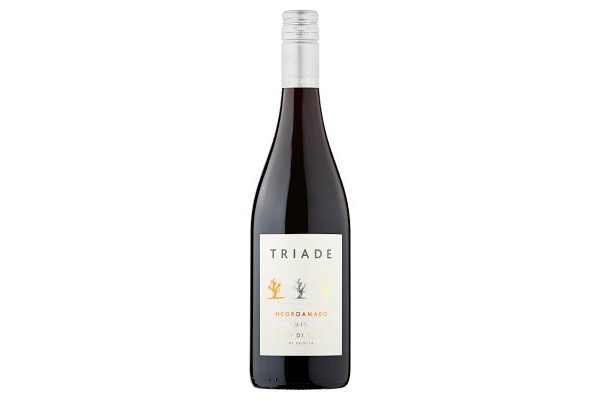
Triade Rosso is a interesting red wine from Puglia in Italy. This blend combines three grape varieties: Primitivo, Negroamaro, and Nero di Troia. The result is a wine that is deep red in colour, offering a different type of complexity.
On the nose, the wine greets you with a bouquet of blueberries, dark cherries, cinnamon and black pepper. The taste is pleasing and spicy, with subtle hints of chocolate and oak that add depth to the flavour.
The wine has gained a 3.8 rating on Vivino, which suggests it has been well-received. As someone who counts Primitivo and Negroamaro among their favourite wine grapes, I had high expectations for this blend. While it’s undoubtedly a great wine, I personally found it not quite as compelling as varietals predominantly made from either Primitivo or Negroamaro (see my picks). There was also a conflicting aftertaste that I couldn’t quite put my finger on, although my wife found it agreeable. I believe she generally has a more refined palate than I do, so take my reservations with a grain of salt!
In terms of pricing, Triade Rosso IGT Puglia has seen some fluctuation at Waitrose, ranging from £7.49 to £9.99. As of writing this, it’s on the more affordable end at £7.49, making it a good time to give it a try if you’re curious.













